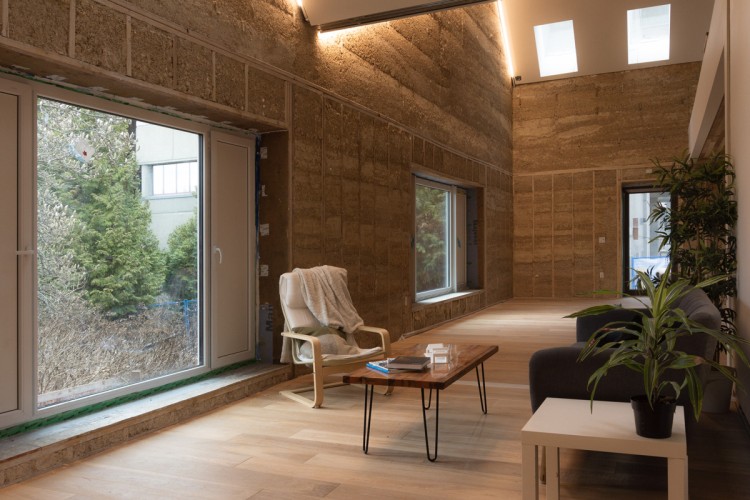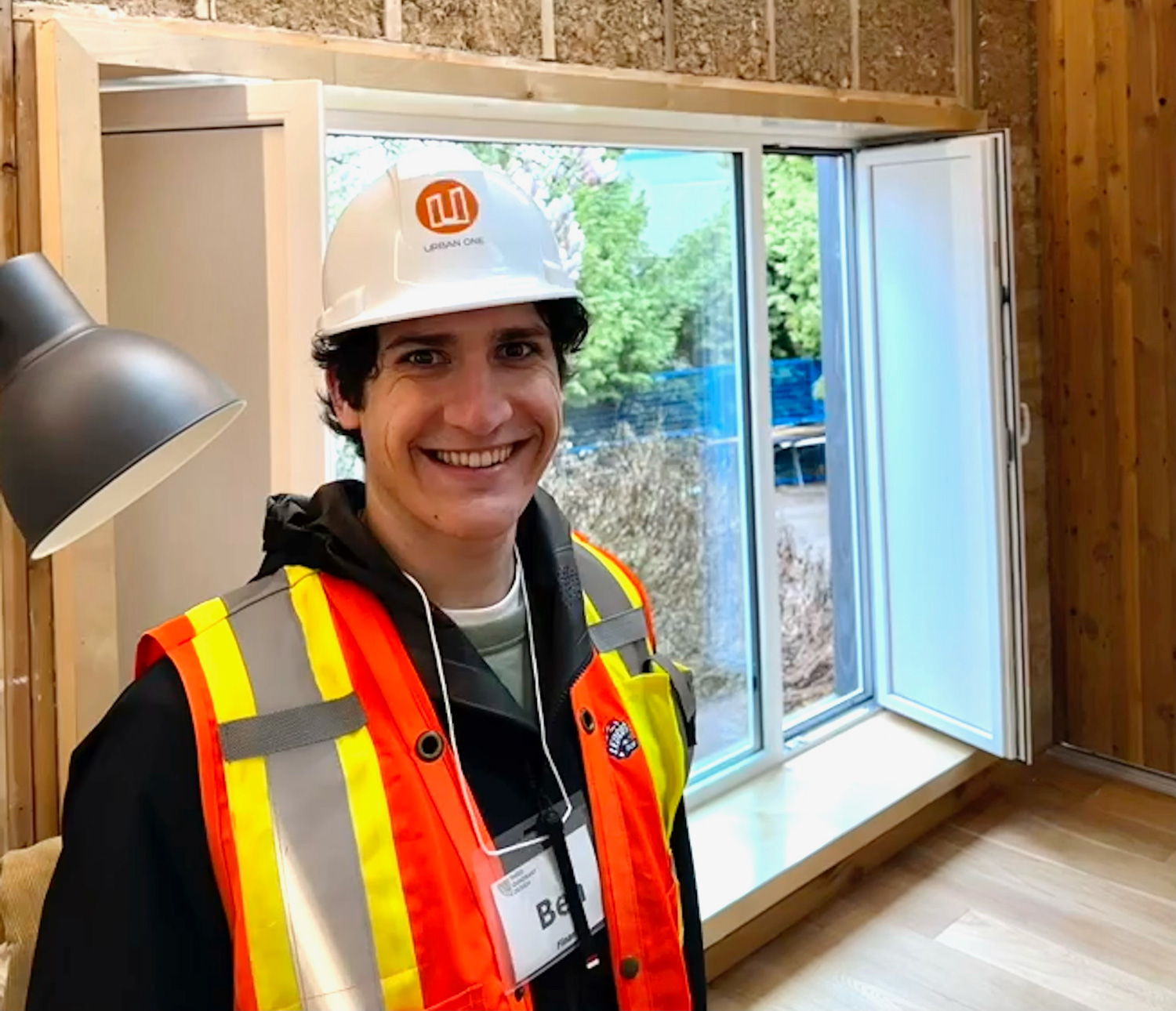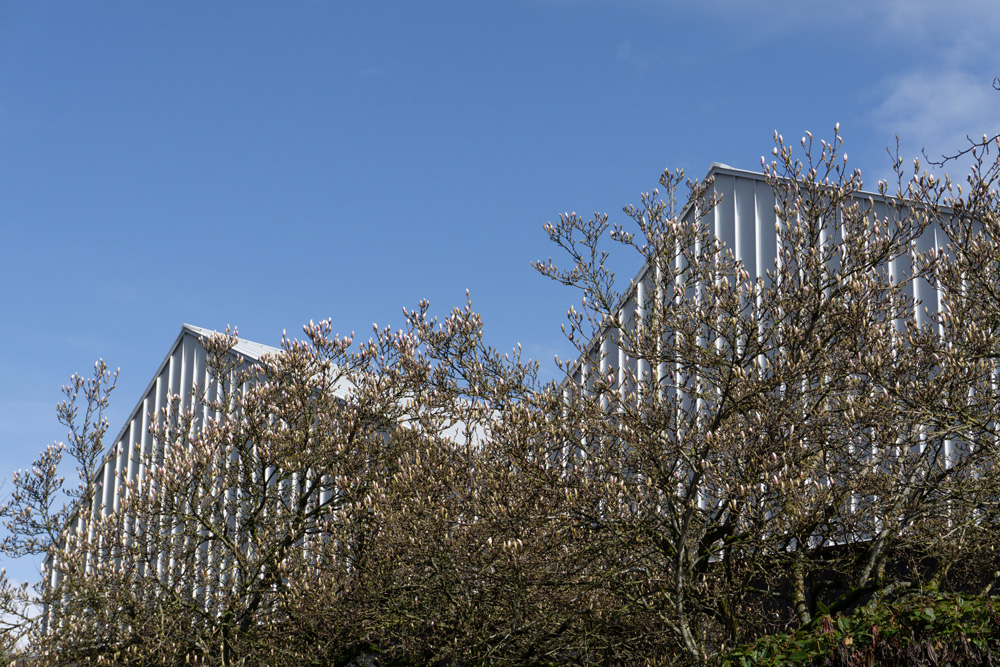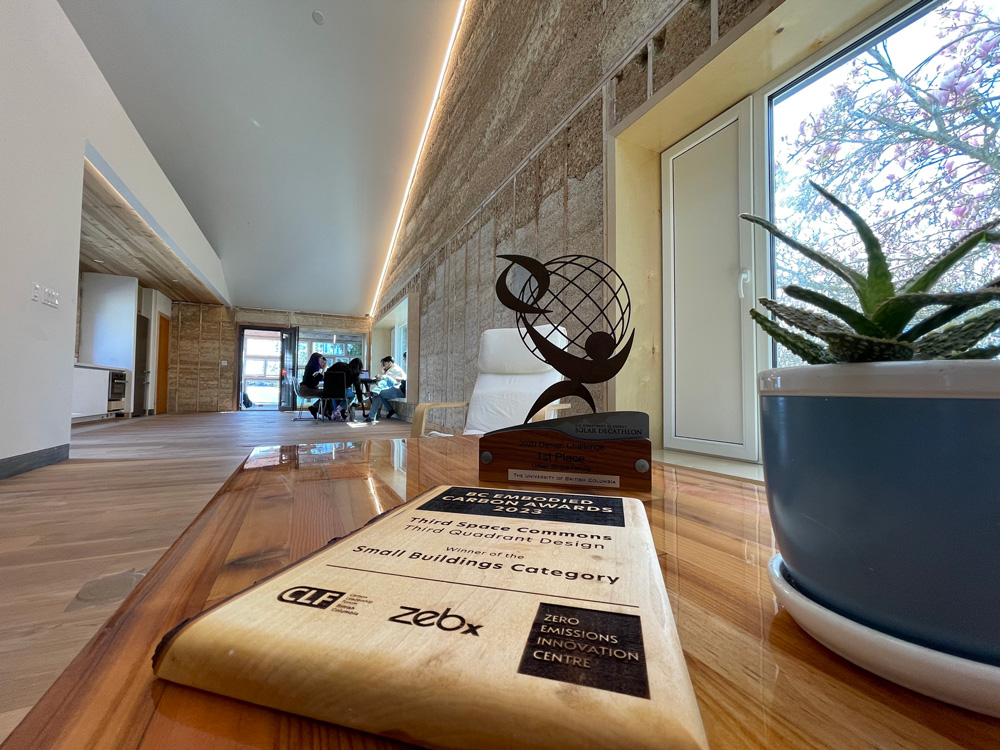
How UBC Sauder students helped build Third Space Commons, a gamechanger in green construction

Photo by: Maverick Chan, Third Quadrant Design
Related Links
Following the official unveiling of Third Space Commons, a new UBC Faculty of Applied Science teaching and learning space on campus, three UBC Bachelor of Commerce (BCom) students share how they were involved in its carbon-minimal construction.
Ao Lin Shen, Ben Rener, and Olivia Butzelaar are reflecting on what they’ve accomplished alongside their teammates from Third Quadrant Design. The group of 60 UBC students from across 14 programs and three faculties have just put the finishing touches on Third Space Commons.
Situated at 6363 Biological Sciences Road, the 2,400 square foot building seamlessly blends in West Coast architectural elements, featuring wood, glass, and expansive ceilings. What truly sets this structure apart, however, is its dedication to sustainability.
“Standard institutional buildings are constructed with concrete, steel, and wood but most of us don’t think about where those materials come from or how much carbon they take to produce,” says Rener. “Our goal for Third Space Commons was to build a structure that was as carbon-light as possible. We had to analyze every aspect of the building's design and materiality to reduce its overall embodied emissions.”
Applying creativity to a fundraising challenge
Back in the fall of 2021, Rener was sitting in a BCom real estate finance class when a group of engineering students presented their plans to create an eco-friendly live-work home for a design and build competition.
Fundraising was a major obstacle for the team at the time. Intrigued, Ben joined the executive team as finance lead. After a few months, he brought on Shen, another business student majoring in real estate and finance, to help form a sophisticated fundraising strategy.
“We decided to target the building industry in Vancouver and created a list of 130 companies in engineering, architecture, construction, and real estate development on the West Coast. Then, we started cold calling and emailing, reaching out on LinkedIn, and visiting their offices,” explains Shen. “Our pitch focused on the opportunity for companies to align themselves with an impactful sustainability project and to cultivate connections with UBC students, a valuable asset for future talent acquisition.”
Once they landed their first big sponsors, the job got easier. More and more companies wanted to get involved, from small businesses to major corporations. With the help of more than 70 sponsors, the students raised a remarkable $1.85 million in cash and in-kind donations, which they say is the largest amount ever raised by a student team at UBC.
Coordinating outreach efforts
As the project grew in scope, the team brought on Butzelaar, a BCom student majoring in marketing and concentrating in business law. Butzelaar joined Rener and Shen on Third Quadrant Design’s executive team in September 2022. She began developing the communications and media outreach strategies and facilitating event planning.
“We focused on rebranding all of our social channels and coordinating our sponsor relationships,” says Butzelaar. “We rolled out a recognition campaign for over 70 sponsors on Instagram and LinkedIn and hosted community events, including a three-day open house and a sponsor launch event.”
Pushing the boundaries of carbon minimalism
While the business students focused heavily on fundraising and marketing, the architecture and engineering students were able to move their design from concept to construction. After navigating the intricate process of permitting, the project reached a significant milestone when it broke ground in mid-August 2022, with the foundation work swiftly underway.
The construction of such a high-performance building illustrates the potential of green building innovation, with one distinguishing feature being its hempcrete walls.
“Hempcrete is made by mixing hemp fibres, lime, and water,” says Rener. “Not only does hemp sequester carbon during its growth cycle, but it also sequesters carbon during the curing process. So, as the building dries, it constantly sucks carbon into the walls and continues to do so for 40 to 50 years, creating a positive environmental effect.”
Photo by: UBC Faculty of Applied Science
Leading with sustainability
Third Space Commons is already attracting industry attention as a gamechanger in green construction. The project recently won the BC Embodied Carbon Awards 2023 for small building construction, and placed third in the U.S. Department of Energy Solar Decathlon 2023 Build Challenge.
But for Rener, Shen, and Butzelaar, the biggest reward has been the learning process.
“One lesson that stood out for me is the power of great storytelling in driving change,” says Shen. “Our challenge was to craft a narrative so compelling that it would inspire complete strangers to believe in us to the extent that they would donate tens of thousands of dollars to a seemingly random group of students. Through skillful pitching, we secured the necessary backing to realize our project, demonstrating how a captivating narrative can drive tangible impact."
For Butzelaar, the experience has inspired her to pursue a career in sustainability and real estate law.
“Through my involvement with Third Quadrant, I have gained an appreciation for the practicality of sustainable design and the degree to which it will shape future communities. As I plan to pursue a career in real estate law, understanding where the market is headed will provide a valuable reference point in my future studies,” says Butzelaar.
Rener, who will be working in real estate development after he graduates in May, says that Third Space Commons has taught him that strong leadership is needed to adopt a different approach to sustainability.
“The regulatory system in B.C. doesn’t allow for low-embodied carbon buildings just yet. We live in an environment that is fortunate to have a sustainable energy supply, meaning our efforts should be directed towards the advancement of construction practices and material innovation rather than operational efficiency,” explains Rener. “We as students need to be the driving force behind this change”.
The students will now turn Third Space Commons over to the Faculty of Applied Science for future management. Shen, Rener, and Butzelaar hope the space will become a classroom and living laboratory for collaboration among students who share their passion for answering the climate challenge with creative solutions.
“We learned throughout this process that it is important to challenge common understandings on how our spaces are designed, built, and used,” says Rener. “We hope this project has inspired the community to test norms and push the limits of sustainability.”


